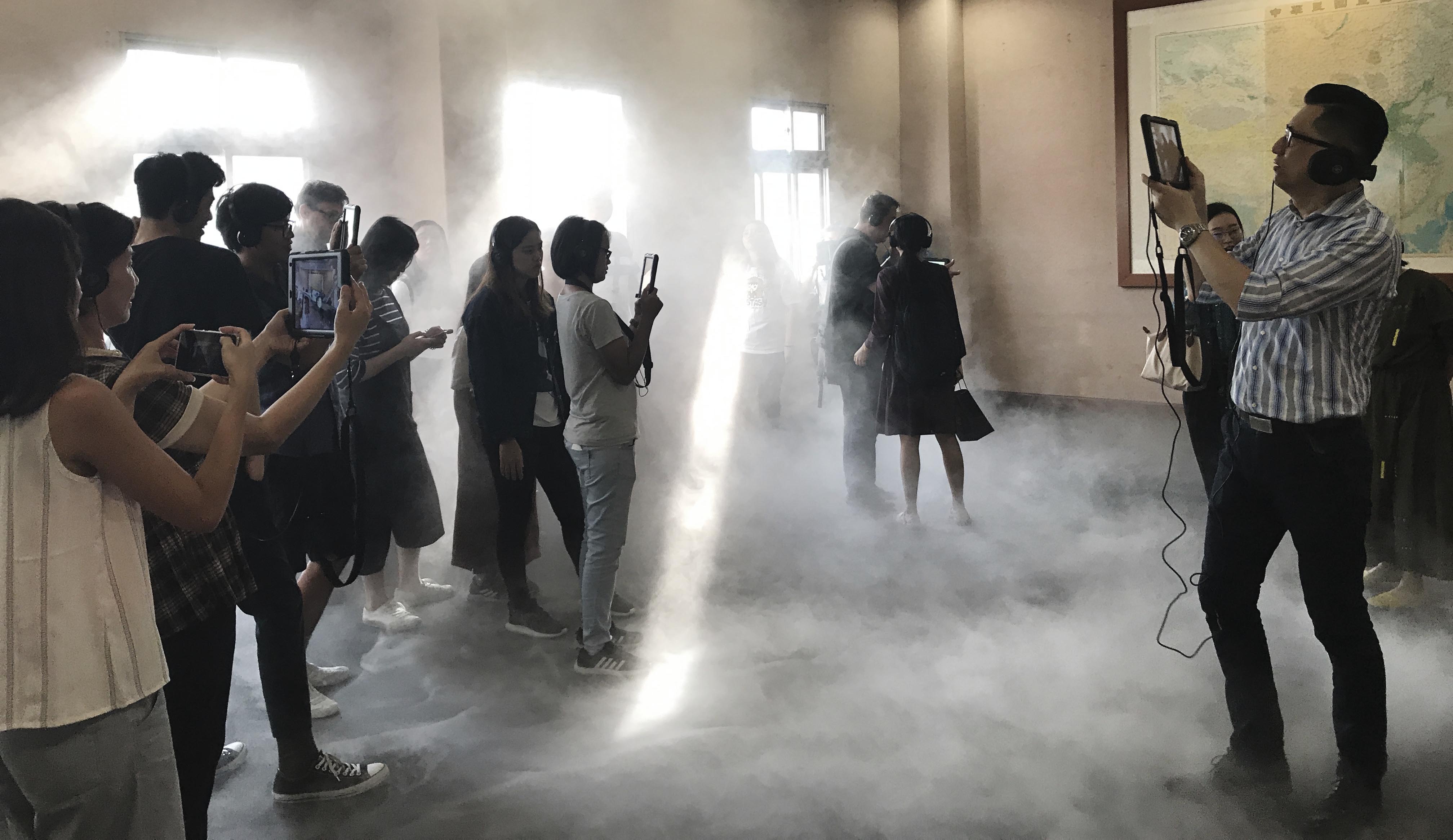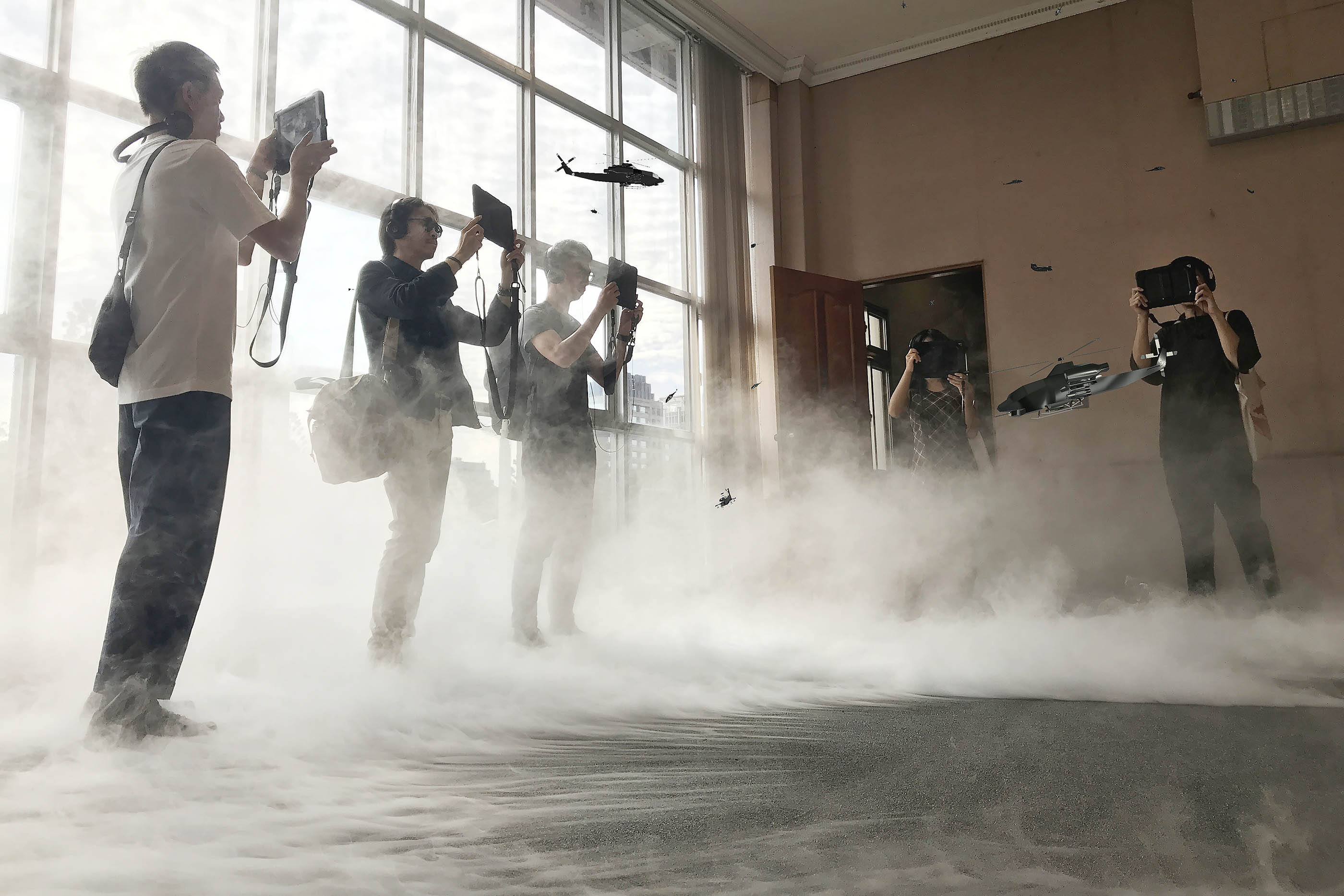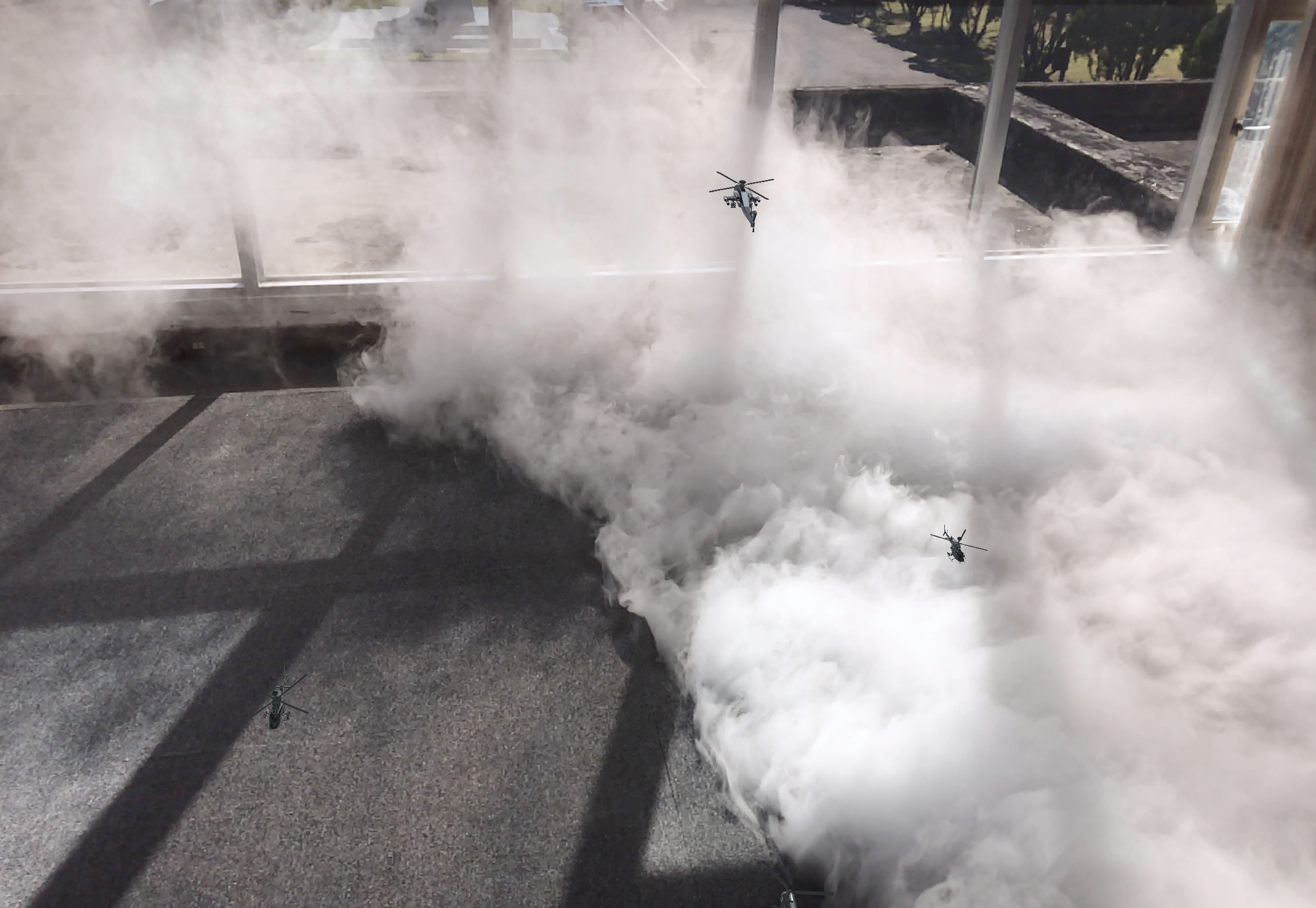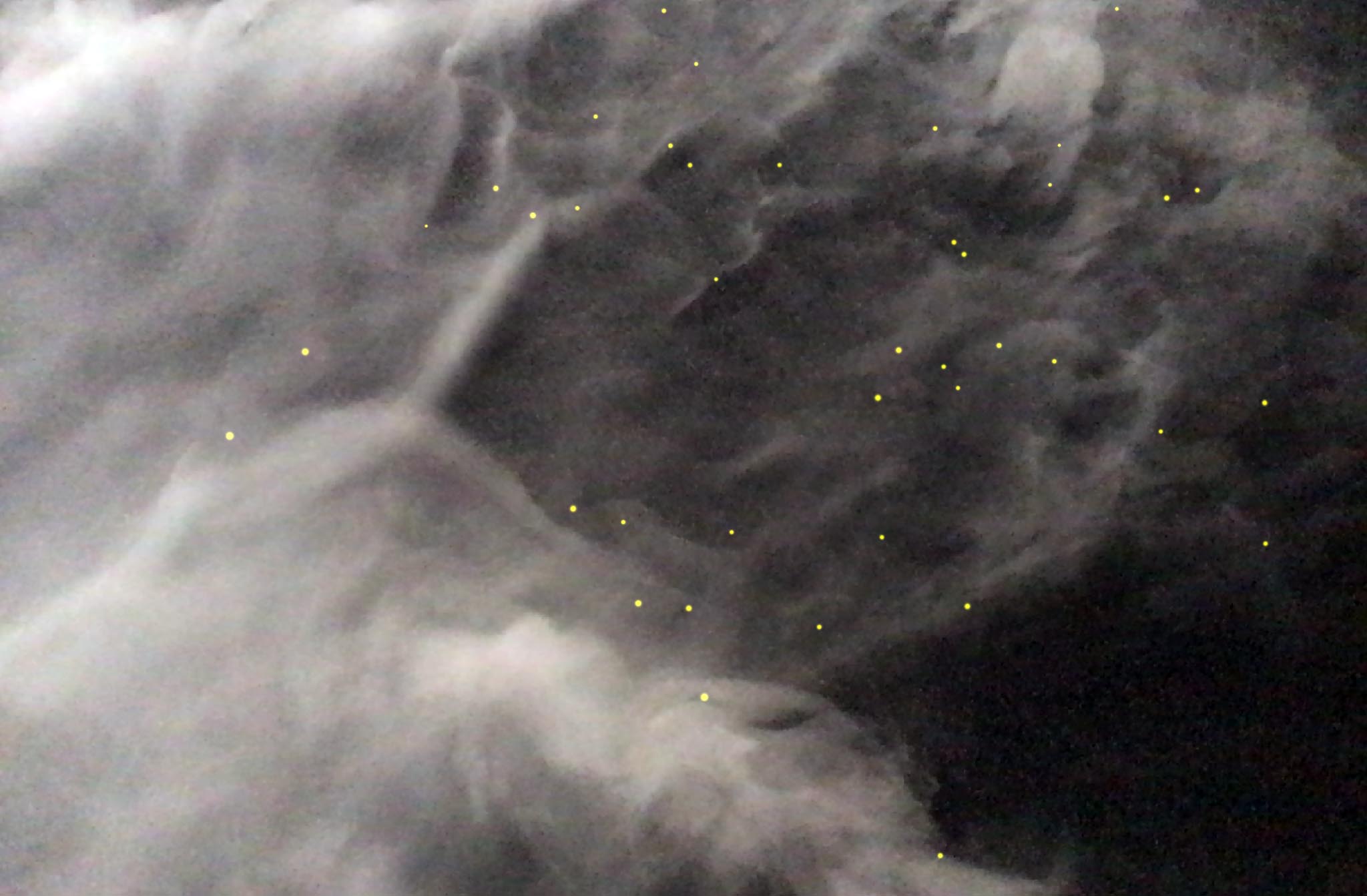Exhibition / Works / LuxuryLogico / CV / Contact
Current/y / Rating |||||| || / Lichen_ / The Insomnia Sketchbook / The Most Beautiful Scenery / Hard Hard / Airspace / The Sound of Blooming / Voyage in Time / Rebirth / Vision Values / Light Field / Solar / Serenity in the Dark / a~ / M / Square / Scripting / Equal / Day / Fly! no matter what / Miscarriage of Time / Project Woodpecker / Flowing / Date Line / Rear / Megaphone
2018
AR
Low fog machines, AR app, iPads, headphones and a subwoofer
Site Specific
Viewing Instruments and the Construction of Imagination
How does a viewing instrument lead the act of seeing to the production of imagery and sensory perception at different levels? Airspace addresses a nation's control over the sky as well as the relationship between people of a nation and its military weapons. Employing the technology of augmented reality in the representation, the work includes an air show and a footage of a Taiwanese political TV show – where the purchase of fighter jets - is debated in two respective rooms. The former - demonstrates ordinary people's common understanding of the army: an idealized image of military aircrafts created by the state through military performance. The latter, on the other hand, shows a discussion about the state's attempt to purchase F35 Fighter Jets. Natural elements are incorporated in both scenarios. In the first exhibition space, the artist fills the physical space with fog. Floating between the massive performance of advance military weapons, the appearance of the fog enriches visual and sensory perceptions and creates a sense of conflict between military weapons and nature. In the second exhibition space, a bird abruptly enters the scene in the augmented reality as the audience listens to the familiar voice of the TV program host who introduces the aircraft. The bird flies around, attempts to perch on the aircraft, and eventually shrinks and disappears with the aircraft, being even more dominant than the aircraft. Through this work, Chen aims to discuss relationships between the military power of a nation, aircraft weapons and nature. To experience Airspace, the audience has to hold an iPad and move around in the exhibition spaces in order to discover more details through the screen. At the same time, the bodies of the viewer and other visitors, along with their individual routes of movements, also form a view to be seen. The viewers' focus constantly oscillates between the reality and the virtuality, enabling them to become aware of the correlations between the body, the image and the space they occupied.
Emancipating Military Space as a Form of Power
The room that houses Airspace was the most classified space that was only accessible to the highest ranks when the site was still the Headquarters - the Commander's Office and its reception room on the second floor of Political Warfare Building. When a classified military site opens to the public as a cultural site for experiments, the bodies of viewers are allowed to enter this previously classified military space for command to experience artworks. The map left in the building, the old layout and the spatial arrangement all keep reminding visitors of the function of the space and the power manifested. On the other hand, the images in the augmented reality illustrate and represent two different intersections of people's daily life and the nation's weapons: one is the viewing of the official dress parade; the other is the representation and discussion of the images in the media. The parade of weapons and military purchase are understood as a nation's endeavor in protecting its people. However, a larger unspoken intent is to gain more control over the sky. According to the artist, already after the end of World War I, some strategists suggested that the nation who dominates the sky wins the war. Consequently, many countries began investing in the research, development and purchase of aircraft technologies. The subtle suggestion on relations between national politics, military weapon, controlling power and nature hinted in Airspace is materialized through the display of the artwork in a historical military site. More importantly, the technology utilized in the artwork challenges and goes beyond boundaries between the visible (the architectural space of the Headquarters) and the invisible (air space) domain of military power, prompting the viewers to think in terms of their physical and sensory perception.
By Nicole Yi-Hsin Lai





